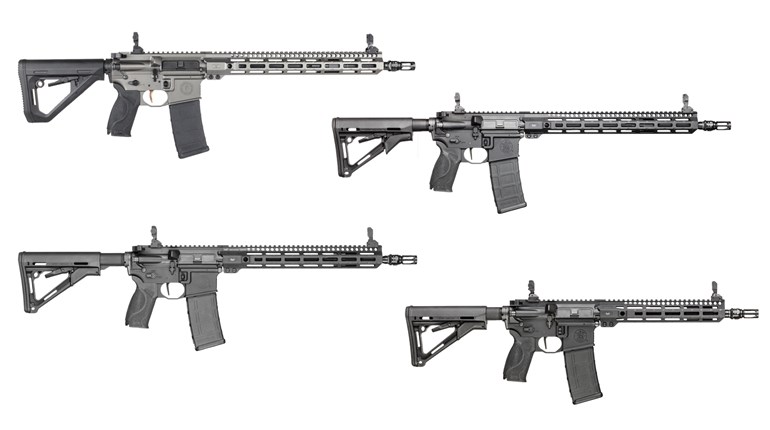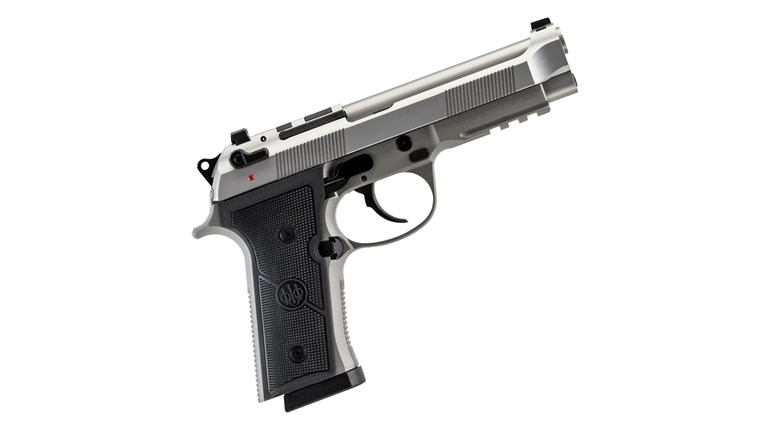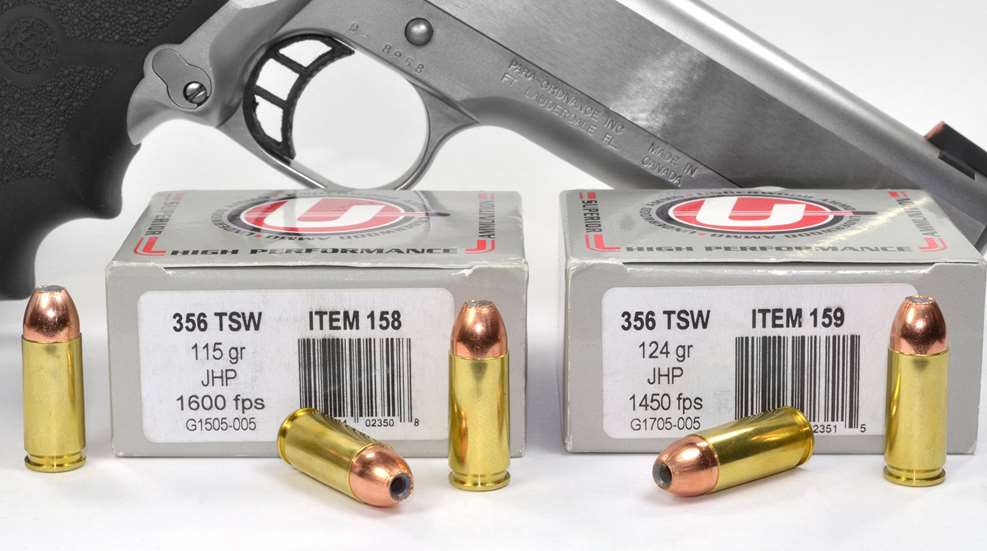
It wasn’t that long ago that Smith & Wesson and Federal Cartridge Company introduced a new 9 mm cartridge. It was 1993, and the new cartridge was the .356 TSW (Team Smith & Wesson, sometimes abbreviated as .356 TS&W). It was made for IPSC and USPSA shooters as a major power factor round for Limited division competition. Rated to launch a 147-grain bullet to 1,240 f.p.s. from a 5-inch barrel, .356 TSW would produce a 182-power factor.
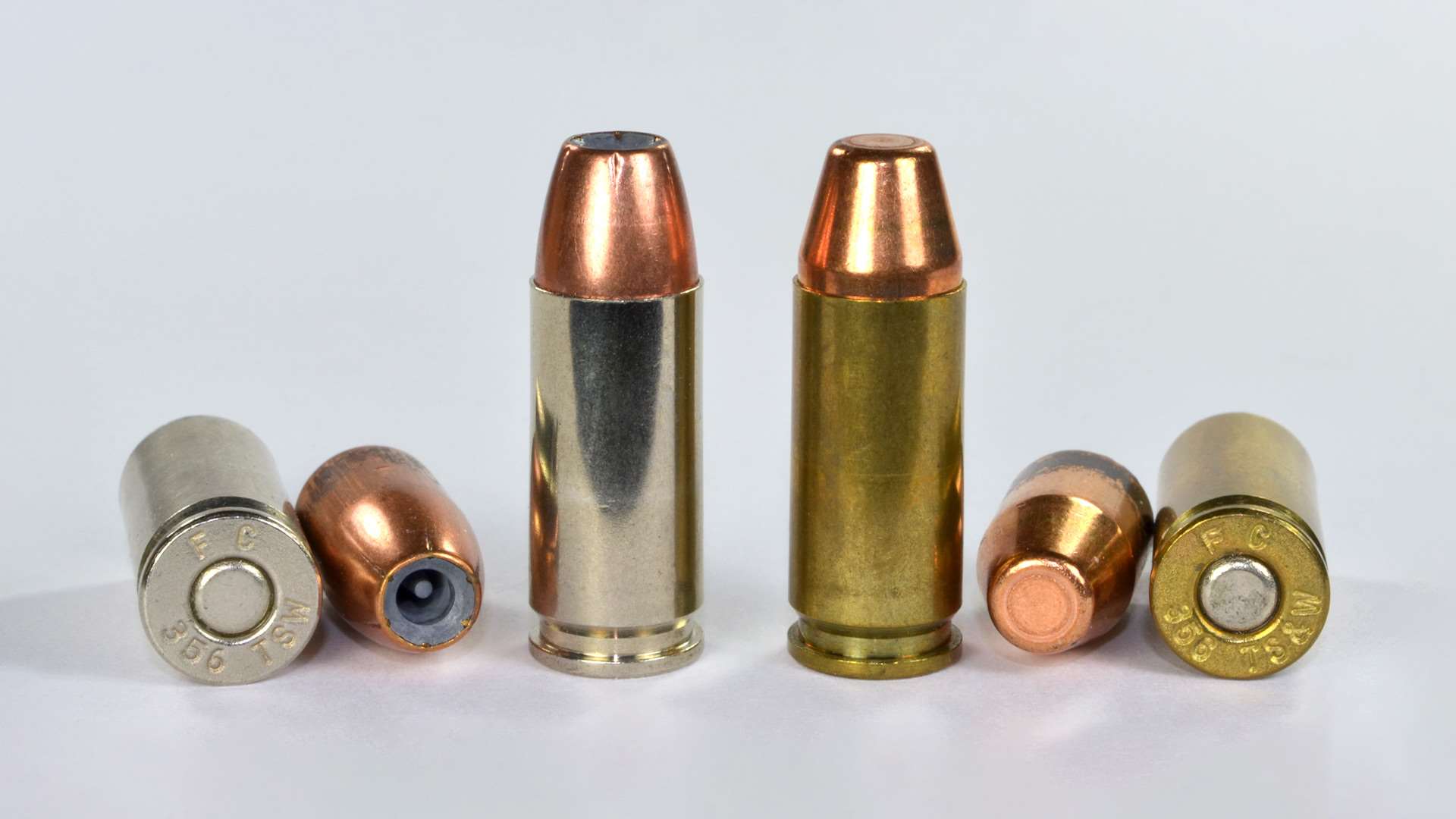
Pistols were made at the Smith & Wesson Performance Center. Model 3566 pistols had 5-inch barrels for competition, and a compact version had 3.5-inch barrels for carry use. The 5-inch gun had a 15-round magazine, and the 3.5-inch gun had a 12-round magazine. Some guns came with a second barrel chambered in 9 mm. In addition, a J-frame Model 940 Special revolver was chambered in the .356 TSW.
But fate was not in its favor. Both IPSC and USPSA ruled that a cartridge had to be at least .40 cal. to qualify for major power factor in Limited division, so the original vision of the .356 TSW was lost.
There’s no shortage of people looking for a potent round for self-defense or other purposes. The .356 TSW certainly has that power, it just needed to find an audience to get established. Since it couldn’t, .356 TSW died nearly as quickly as it was created.
Federal and Corbon produced .356 TSW ammunition. Federal loaded 147-grain FMJ bullets for competition, and 147- and 135-grain hollow-point Hyda-Shoks for self-defense. Corbon loaded a 124-grain bullet to 1,450 f.p.s., which is what a .357 Mag. produces with a 125-grain bullet from a 4-inch barrel.
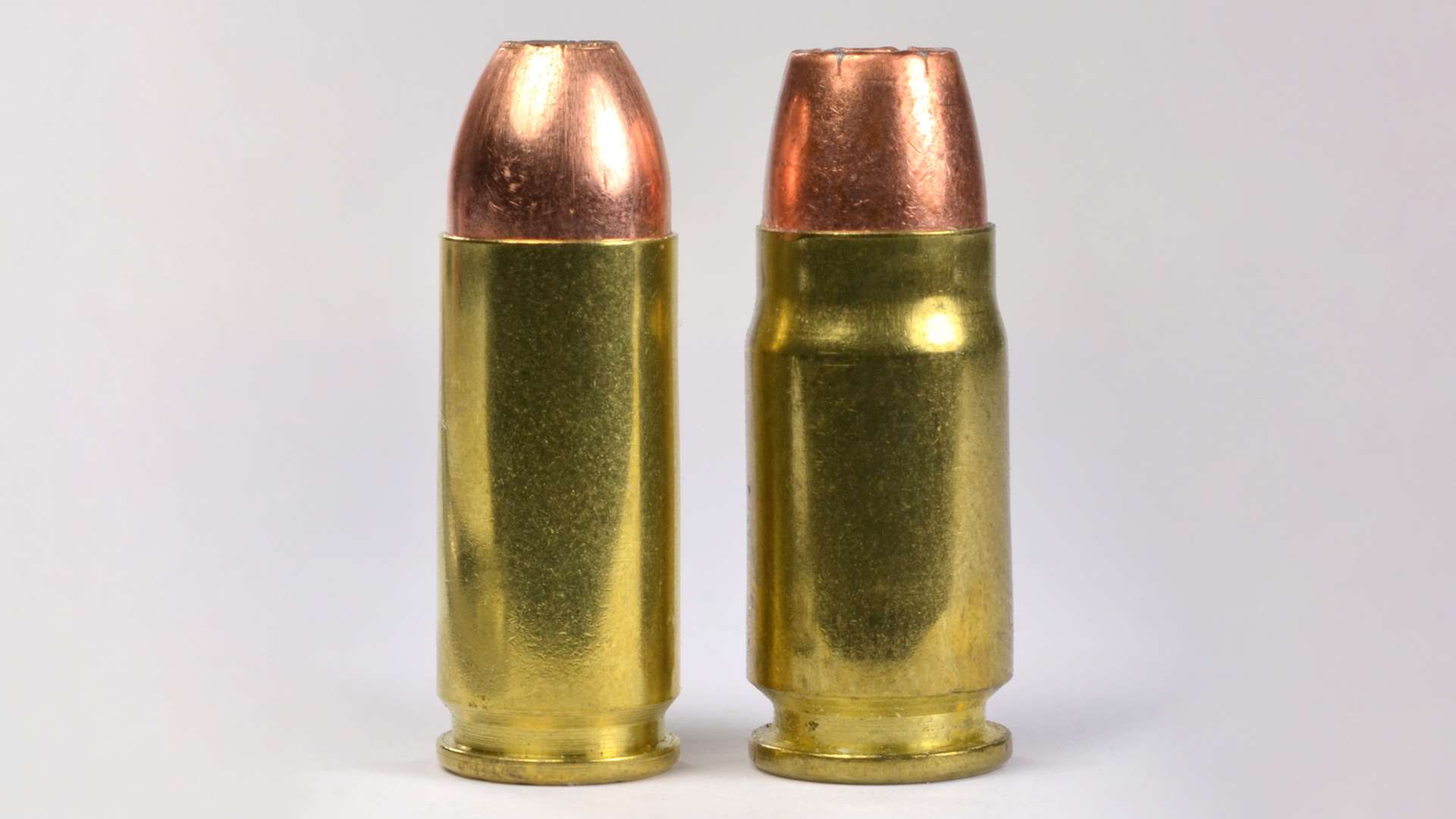
A Potent Round
What makes it so impressive is that the .356 TSW is the same overall length as a 9 mm. To get such high performance from a short round, the pressure must be really high. The .356 TSW has a maximum pressure limit of 50,000 p.s.i., which compares to the 9 mm’s maximum pressure limit of 35,000 p.s.i., and the 9 mm +P limit of 38,500 p.s.i. For reference, the .357 SIG’s pressure limit is 40,000 p.s.i. It’s also a 9 mm-length round, but it has more case capacity than the .356 TSW, because the .357 SIG is a bottlenecked case.
The main difference between the 9 mm and the .356 TSW is their case length. The 9 mm has a case length of .754 inch (19.15 mm), and the .356 TSW’s case length is .850 inch (21.59 mm). The longer .356 TSW case gives it more capacity, but since the 9 mm and .356 TSW are loaded to the same overall length, they end up with the same internal space available when loaded with the same bullet. The longer case prevents it from being chambered in a gun not designed for this high-pressure round.
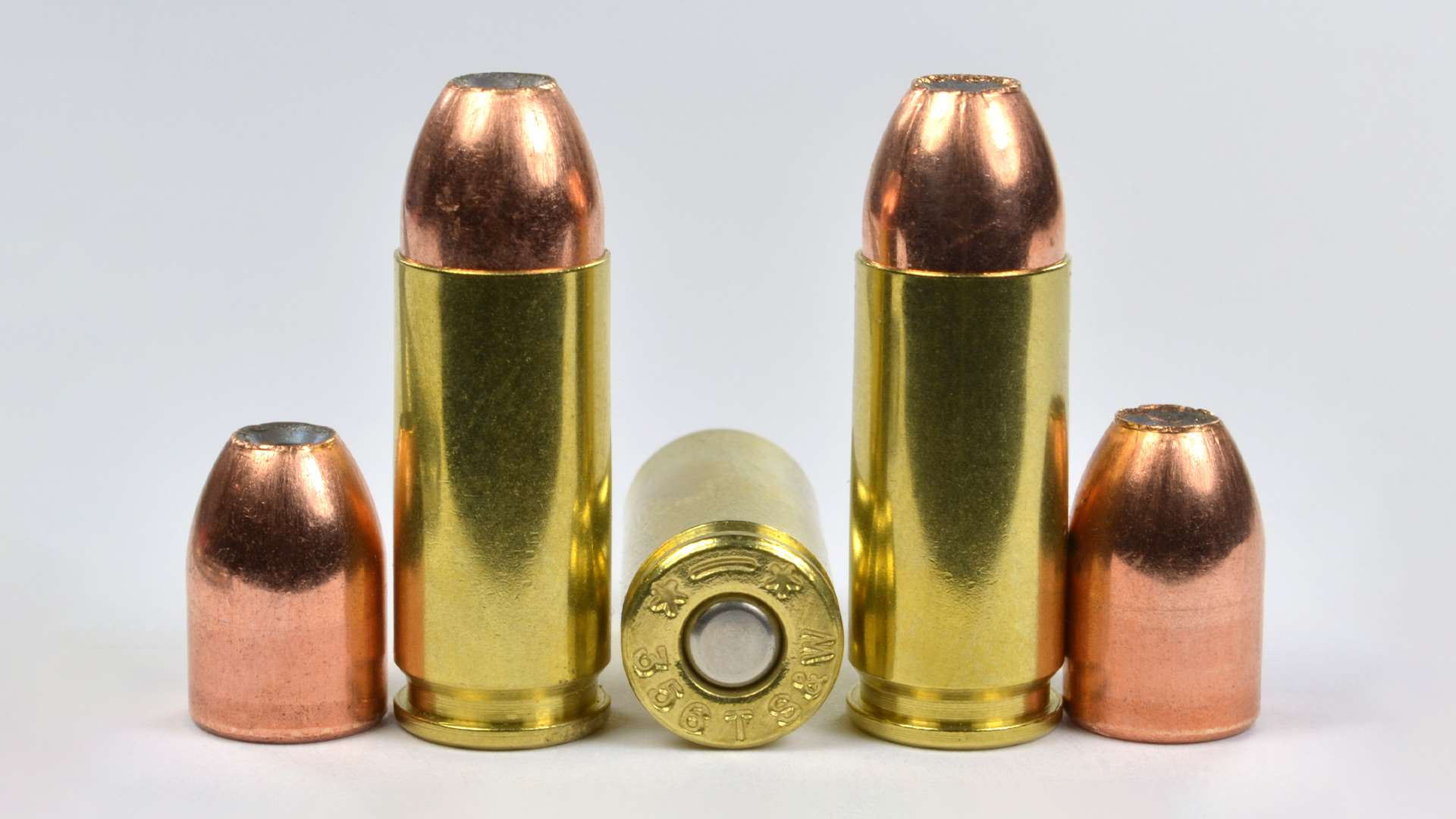
Why the history lesson? The .356 TSW is not dead. There has been a revival of the ammunition. Corbon, which stopped producing the round for a few years, has a load in its current lineup. This one is a 115-grain JHP bullet loaded to 1,600 f.p.s. from a 5-inch barrel. Underwood recently added the .356 TSW to its lineup with two loads: a 115-grain JHP at 1,600 f.p.s. and 124-grain JHP at 1,450 f.p.s.
I love high-performance rounds, so I had to try them out. Along with the new loads from Underwood, I picked up a few vintage rounds from ammo-one1.com, including Federal loads with 147-grain bullets and a Corbon 124-grain one. I paced an order with Corbon for its .356 TSW load, but this was in 2020 during the shortage, and they did not arrive after a few months.
Next was to figure out what to shoot them in. I didn’t have an original S&W .356 TSW pistol, and they sell for a high price to collectors, so that was out of the question. But any other design that could handle high pressure, high recoil 9 mm loads would work. The .356 TSW’s high pressure requires a barrel with full chamber support. I have several 1911s that use ramped barrels, so they were an obvious choice. And a 5-inch barrel length is typical for 1911s, so I could test the ammunition in the same length barrel as the factory ammo.
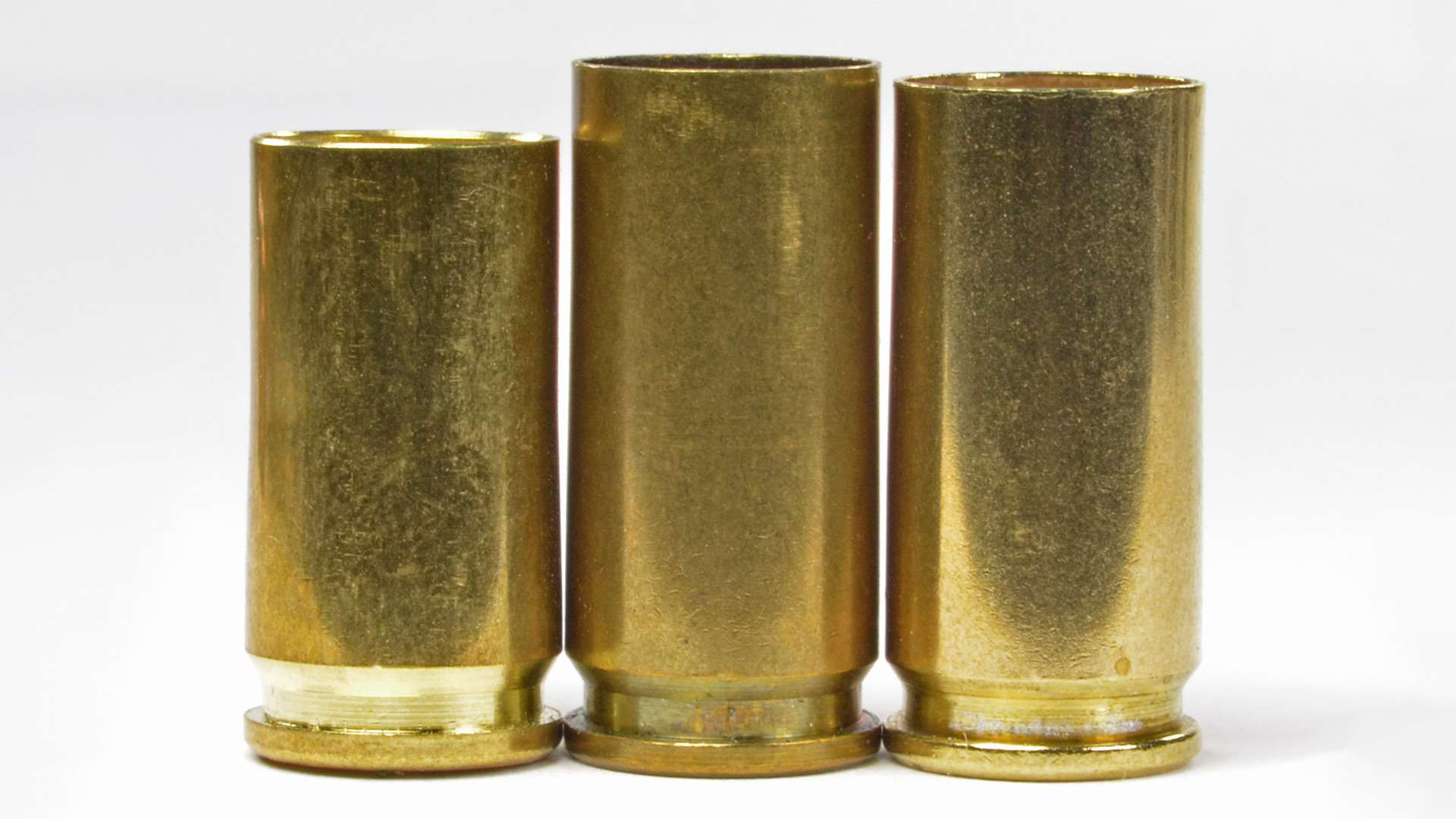
As for the barrel, rechambering a 9 mm was one option, but I didn’t have a spare barrel to use. Searching online, I located a 5-inch ramped Para Ordnance 9x21 mm barrel. The 9x21 mm is very similar to the .356 TSW dimensions, the difference being that the 9x21 mm case is shorter (0.833 inch or 21.15 mm). That translates to a 0.017-inch (.44 mm) difference in length. In fact, another name of the .356 TSW is the 9x21.5 mm. The extra length of the .356 TSW prevents it from being chambered in a 9x21 mm barrel. A 9x21 mm barrel could be easily converted to .356 TSW by cutting the chamber a little deeper.
A quick look at the SAAMI chamber specs for the .356 TSW showed that it had the same throat dimensions as the 9 mm. Not inclined to buy a .356 TSW reamer for a one-time job, instead I reamed the 9x21 mm chamber deeper with my Manson 9 mm reamer until the .356 TSW fit. Now, I was ready for the range.
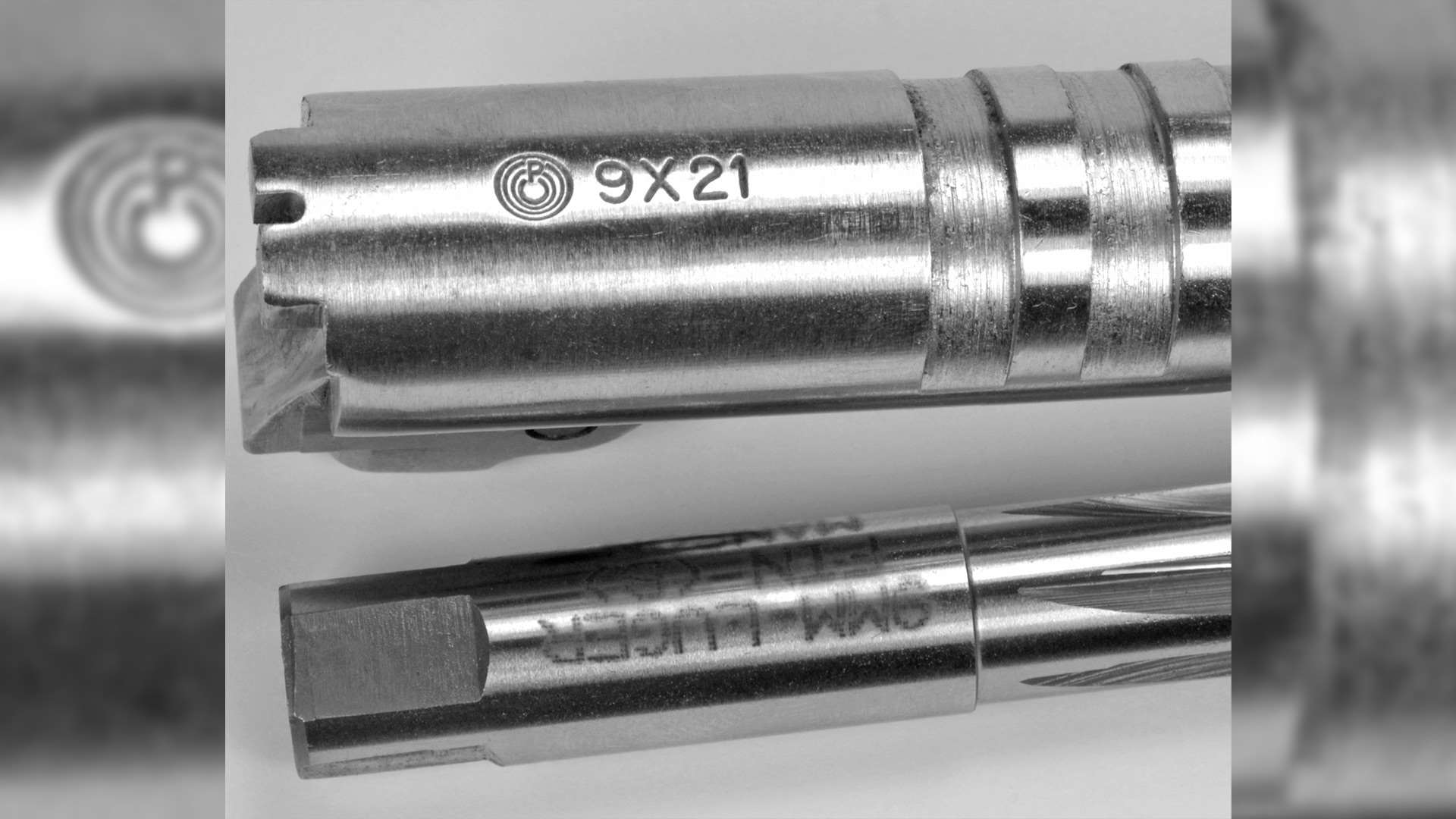
Ballistics
I only had a few rounds of the vintage .356 TSW ammo, so for two examples one round was fired. One round of the Federal 147-grain FMJ ammo produced 1,210 f.p.s.—close to the advertised speed of 1,220 f.p.s. in Federal’s advertisements of the day. Five shots of the Federal 147-grain Hydra-Shok rounds averaged only 993 f.p.s. Expecting them to be the same speed as the FMJ rounds, it was surprising to see they were no faster than regular 9 mm. One round of vintage Corbon .356 TSW with a 124-grain bullet clocked in at 1,474 f.p.s.
Underwood’s 115-grain JHP was recorded at a blazing 1,604 f.p.s. from the 5-inch barrel. That is 657 foot-pounds of muzzle energy. Underwood’s 124-grain load averaged 1,419 f.p.s., just shy of its 1,450 f.p.s. advertised speed and still good for 554 foot-pounds of muzzle energy.
The impressive ballistics come with a lot of recoil. After firing a few rounds, I longed for a compensator on my gun to tame the recoil and help keep the muzzle down.
Conclusion
Is there any chance the .356 TSW could make a comeback? Not likely, but a few specialty gun makers might make them. The critical part is the barrel, and a 9 mm barrel can be easily rechambered to .356 TSW. Recoil must be dealt with, but isn’t that hard to do since we’re talking about recoil in the range of the .357 SIG, 9x23 mm Win. (another forgotten high speed round) and .45 ACP. A stronger recoil spring system or other way to slow the slide, such as a compensator, would also reduce wear on the gun.
Does .356 TSW have a sufficient advantage over 9 mm +P and +P+? The .356 TSW runs about 200-300 f.p.s. faster with 115-grain bullets, about 200 f.p.s. faster with 124-grain bullets and about 100 to 150 f.p.s. faster with 147-grain bullets when fired from the same barrel length, depending on which ammunition you’re comparing.
The .356 TSW is at least as powerful as the .357 SIG, depending on which load you compare. For example, I fired Underwood .357 SIG ammo in a S&W M&P pistol with 4.9-inch KKM barrel. Velocities from 115-, 125- and 147-grain bullets were 1,480, 1,404 and 1,204 f.p.s., respectively (tested the same day as the .356 TSW loads). Ballistics of the two calibers from Underwood are similar, the exception being the 115-grain bullets which were faster in the .356 TSW.
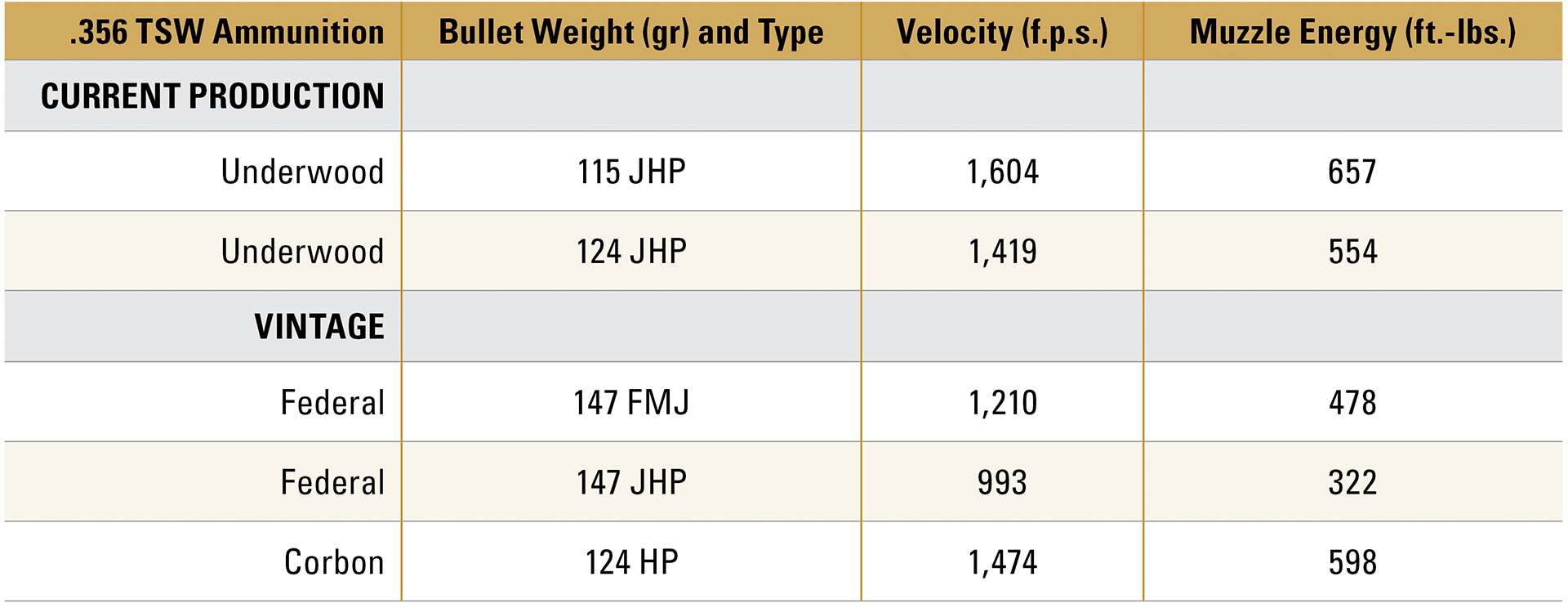
Compared to .357 SIG, the .356 TSW cartridge has a capacity advantage. For example, a Glock G19 (9 mm) chambered in .356 TSW boasts a 15-round magazine capacity, while the same-sized Glock G32 .357 SIG has a 13-round capacity.
The .356 TSW has a place as a serious self-defense round. It could also be used in Open division competition, although it’s doubtful folks will give up their 9 mm-chambered guns for a cartridge with difficult to find (and probably expensive) brass.
I’m not betting that the .356 TSW will make a comeback outside of archaic pistol cartridge lovers. Which is too bad, as it’s a hard-hitting round in a small package. The good news is that .356 TSW owners have more high-performance ammo options for their guns. Time to dust them off and get them back to work.
Read more: Remington 1½ Pistol Primers














